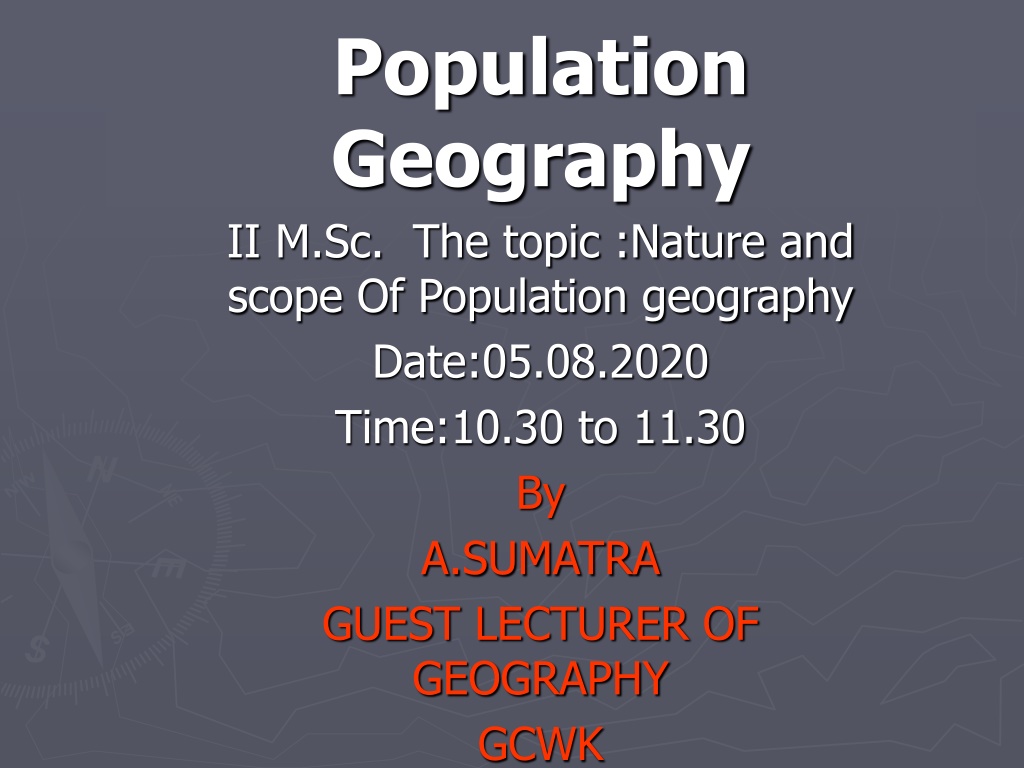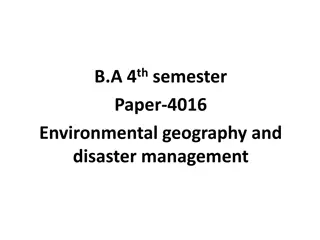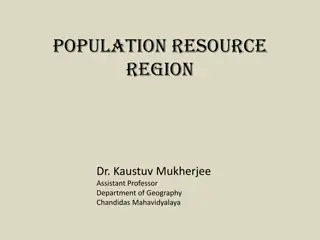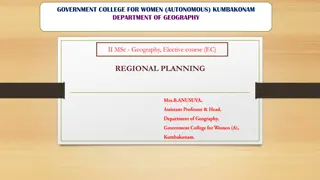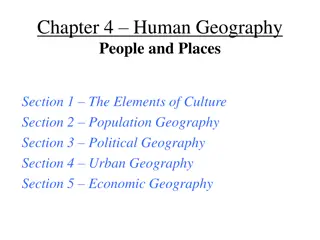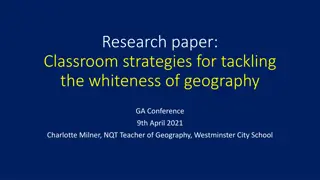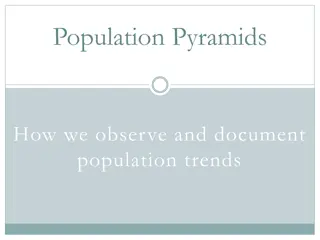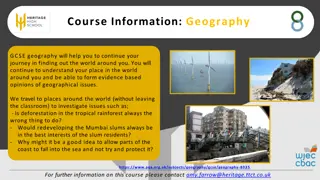Understanding Population Geography: Nature and Scope
Population geography explores how spatial variations in population distribution, composition, migration, and growth are connected to geographic features. It focuses on the interplay between human societies, the physical environment, and cultural aspects. Factors influencing population distribution include environmental resources, climate, and access to technology and transportation.
Download Presentation

Please find below an Image/Link to download the presentation.
The content on the website is provided AS IS for your information and personal use only. It may not be sold, licensed, or shared on other websites without obtaining consent from the author. Download presentation by click this link. If you encounter any issues during the download, it is possible that the publisher has removed the file from their server.
E N D
Presentation Transcript
Population Geography II M.Sc. The topic :Nature and scope Of Population geography Date:05.08.2020 Time:10.30 to 11.30 By A.SUMATRA GUEST LECTURER OF GEOGRAPHY GCWK
Population Geography is the study of the ways in which spatial variations in the distribution, composition, migration, and growth of populations are related to the nature of places. Population geography involves demography in a geographical perspective. More results What are the nature of geography? Geography is concerned with place. ...
Geography is concerned with place. ... Through geography we seek to understand these differences in patterns of human distribution, interrelationships between human society and the physical environment, people's use of the Earth in time and space, and how these differences are related to people's cultures and economies.
A population is defined as a group of individuals of the same species living and interbreeding within a given area. Members of a population often rely on the same resources, are subject to similar environmental constraints, and depend on the availability of other members to persist over time.
Population geography is a division of human geography that focuses on the study of people, their spatial distributions, their characteristics, and their density. Trewartha Trewartha is known as the Father of Population Geography.
The importance of a spatial perspective for demographic research has received considerable attention over the past few decades. Population geography addresses demographic issues and population processes in an explicitly spatial manner, with a focus on the connection between people and places.
What factors influence population distribution? Environmental factors-- What type of natural resources are in the area? Does it have oil, or arable land or access to water? What is the climate like? Does it have capital resources such as transportation and technology?
Economic factors-- What is the economic development like? What are the resources like? Political factors-- What is the government policy? Are there many conflicts? Is it a rural/urban area?
What are the characteristics of human populations? Birth and Death rates- How many people per 1000 are born or die in a year? Age Distribution-- How many people are in each age category?
Male/Female distribution-- Are there more males or more females? Why? Life Expectancy-- How old can you expect to live? Infant Mortality-- How many children die before their second birthday?
Language-- Do the people speak one language or do they have multiple languages? Religion-- Do the people share the same religion or do they have multiple ones? Education-- Are the people highly educated?
What factors influence population growth rates? Does the country have modern medicine and hygiene practices? What is the level of the average education? Is the country industrialized and do the people live in urban areas?
